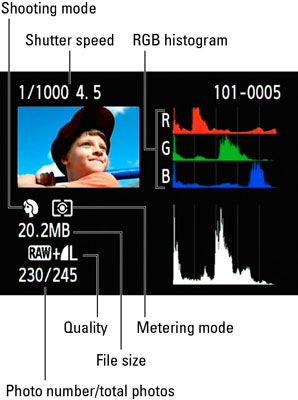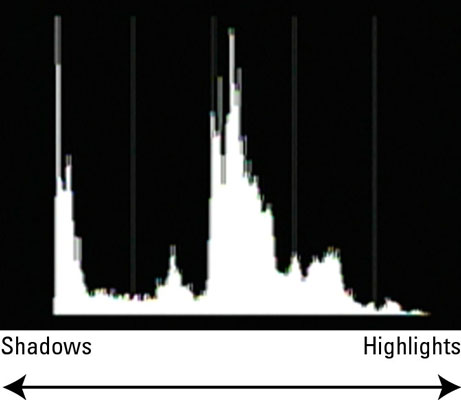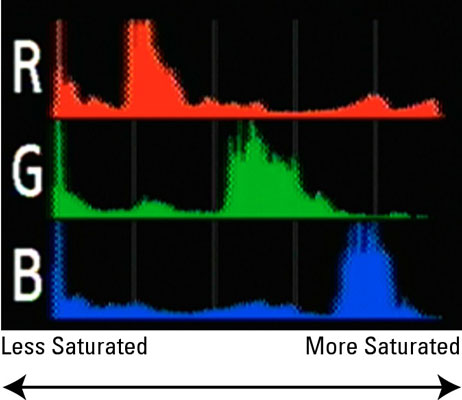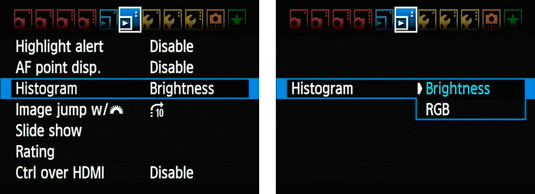The Histogram display is a variation of the Canon EOS 60D Image Playback Shooting Information display. You see the thumbnail view of your image, but this time some of the extensive shooting data is replaced by additional histograms. You actually see less printed info in the Histogram display mode.

Interpreting a brightness histogram
One of the most difficult photo problems to correct in a photo editing program is known as blown highlights, or clipped highlights in others. In plain English, both terms mean that highlights (the brightest areas of the image) are so overexposed that areas that should include a variety of light shades are instead totally white.
For a detailed analysis of the image exposure, check the Brightness histogram, which is a little graph that indicates the distribution of shadows, highlights, and midtones (areas of medium brightness) in an image. Photographers use the term tonal range to describe this aspect of their pictures. The Brightness histogram appears to the right of the image thumbnail in Shooting Information display mode and in the lower-right corner in Histogram display mode.

Reading an RGB histogram
When you view images in Histogram display mode, you see two histograms: the Brightness histogram and an RGB histogram.

To make sense of an RGB histogram, you first need to know that digital images are known as RGB images because they’re created from three primary colors of light: red, green, and blue. Whereas the Brightness histogram reflects the brightness of all three color channels rolled into one, RGB histograms let you view the values for each individual channel.
When you look at the brightness data for a single channel, though, you evaluate color saturation. When you mix red, green, and blue light, and each component is at maximum brightness, you create white. Zero brightness in all three channels creates black.
If you’re a fan of RGB histograms, you may be interested in another possibility: You can swap the standard Brightness histogram that appears in Shooting Information playback mode with the RGB histogram. Just visit Playback Menu 2, highlight the Histogram option, and press the Set button. Select RGB instead of Brightness and press the Set button again.






